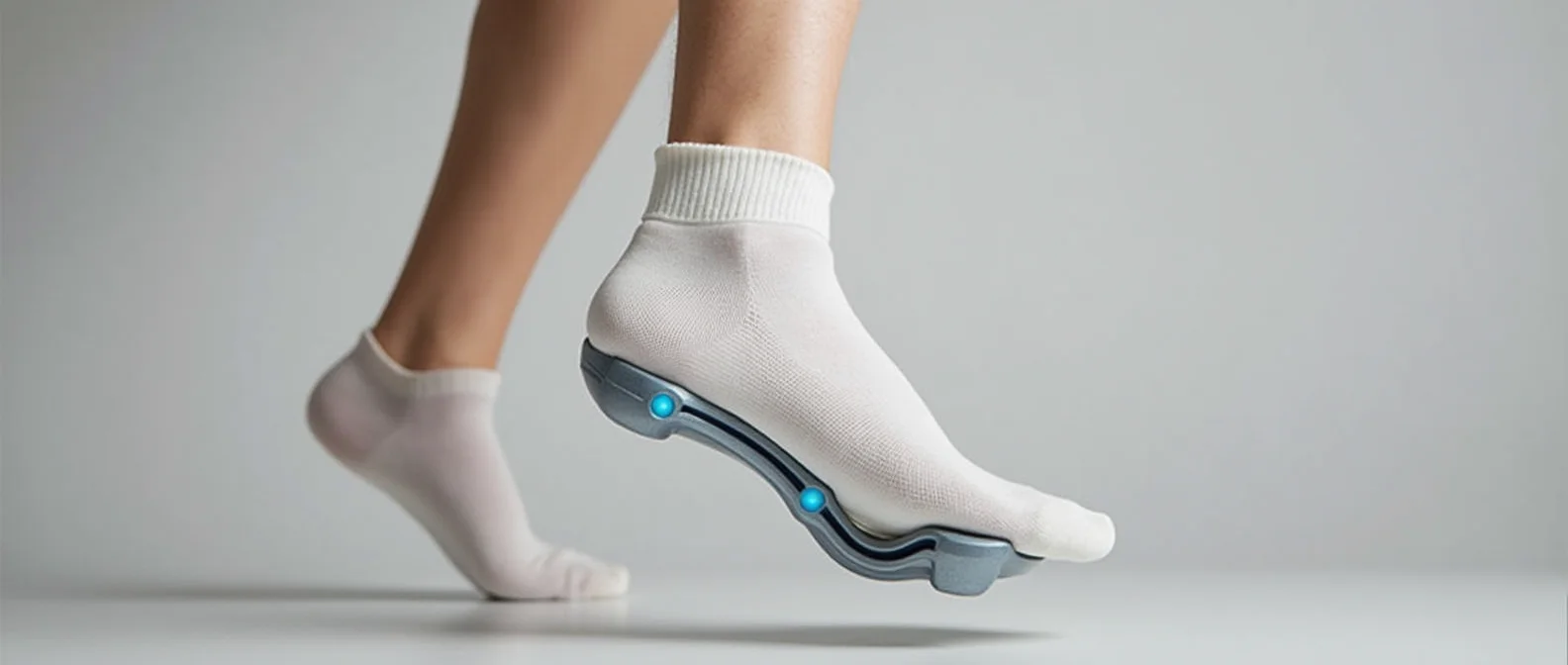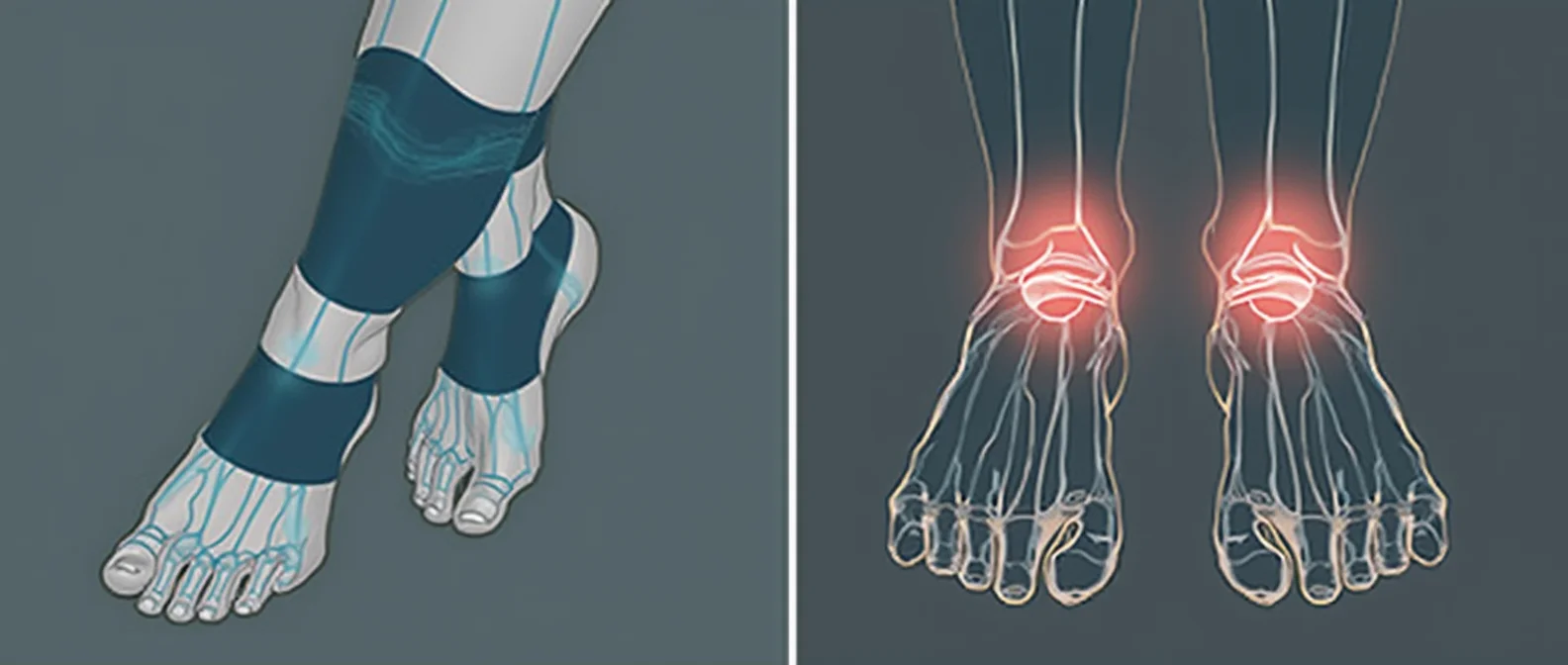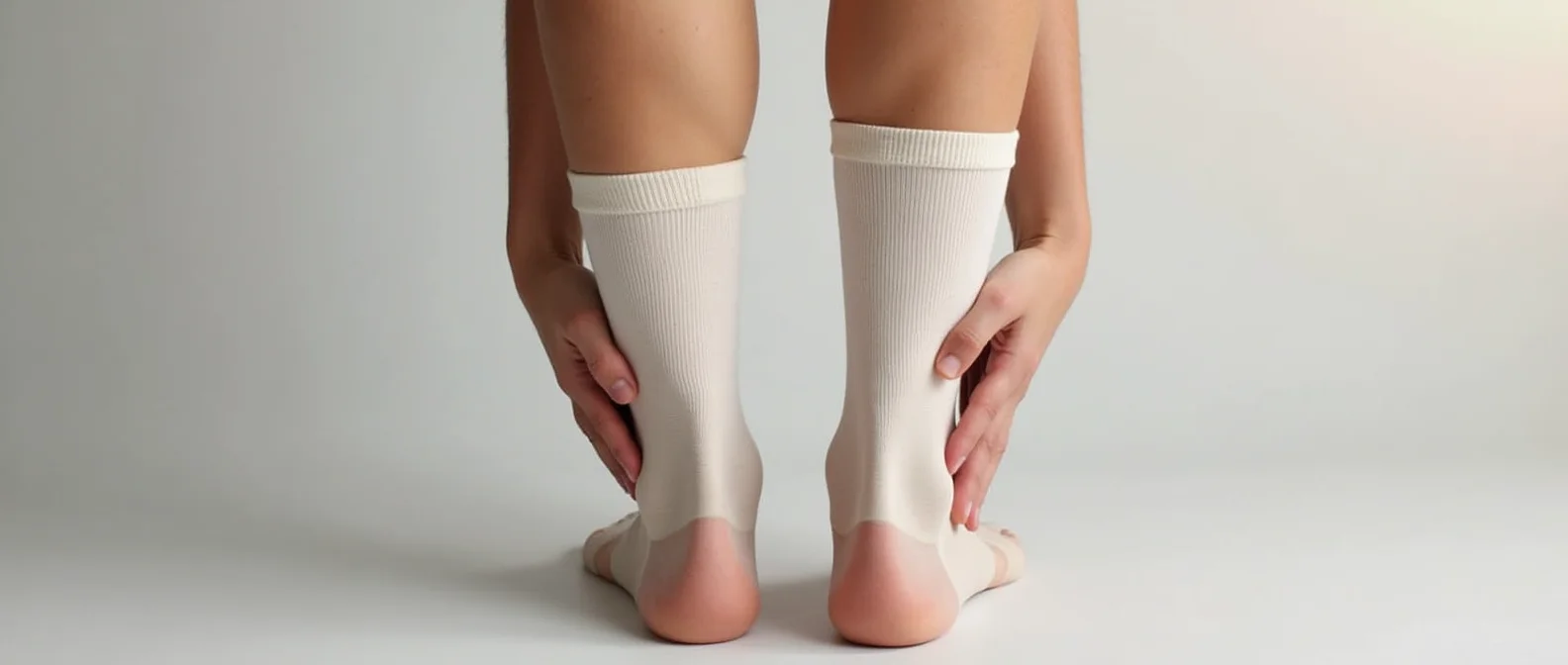Currently Empty: $0.00

Compression Socks for Nurses: Elevate Comfort, Energy, and Health at Work
In the nursing world, you know firsthand the demands of long shifts, constant movement, and hours spent standing. The stress on your legs and feet can lead to aching muscles, swollen ankles, and exhaustion that even a good night’s sleep may not fully cure. Enter compression socks — a simple yet powerful solution that can enhance your comfort, improve circulation, and bring relief to your hardworking legs. Compression socks are more than just a trend; they’re a vital tool for boosting your physical well-being on and off the job.
Imagine coming home after a shift feeling refreshed rather than worn out. Compression socks are here to make that dream a reality, helping you enjoy improved leg health and reduced discomfort, so you can focus on what matters: providing the best care to your patients and enjoying a better quality of life yourself.
Table of Contents
What Are Compression-Socks and How Do They Work?
Defining Compression-Socks
Compression-socks are specifically designed to support blood flow in your legs by applying gentle, targeted pressure. Unlike regular socks, they’re crafted to fit snugly, especially around the ankle, with a gradual decrease in pressure up towards the calf. This technique, known as “graduated compression,” encourages blood to flow back towards the heart, reducing pooling in the lower extremities.
The Science of Compression-Socks
So, how exactly does it work? Compression-socks are all about circulation. By promoting blood flow and improving the efficiency of your venous system, these socks reduce swelling and ease the pain associated with prolonged standing. For nurses, the impact of better circulation can be profound, as it helps manage physical stress and prevent more serious issues like blood clots and varicose veins.
Key Benefits of Compression Socks for Nurses
- Enhanced Circulation: By applying pressure in all the right places, compression socks keep blood moving effectively.
- Reduced Swelling: Combat swollen feet and legs after a long shift.
- Improved Comfort: Focus on your duties, not discomfort.
- Leg Health Maintenance: Prevent varicose veins and related issues.
Why Nurses Need Compression-Socks
Alleviating Leg and Foot Pain
One of the most immediate benefits of compression-socks is the relief they provide for aching feet and legs. Standing and walking on hard surfaces all day places constant strain on your muscles, tendons, and joints, leading to fatigue and pain. Compression socks reduce this strain by supporting the natural structure of your legs, which in turn reduces pain and prevents long-term damage.
- Pain Reduction: By supporting muscle tissue, compression socks relieve soreness.
- Stabilized Muscles: Compression socks help reduce micro-vibrations that lead to fatigue.
Fighting Swelling and Fatigue
Swelling isn’t just uncomfortable — it can lead to more severe problems down the line, such as chronic venous insufficiency. Nurses frequently experience swelling due to the accumulation of fluids, particularly after long shifts. Compression socks apply pressure that aids in fluid distribution, reducing puffiness and helping you feel more energized by the end of the day.
- Less Fluid Accumulation: Compression socks help prevent fluid buildup in your legs.
- Better Energy Management: With less fatigue, you’ll feel more alert and energized.
Preventing Varicose Veins and Blood Clots
Varicose veins are often a result of prolonged standing, which increases pressure in your veins and can cause them to twist and enlarge. Compression socks offer a proactive approach, reducing the risk of these veins by minimizing pressure build-up. Additionally, compression socks help reduce the likelihood of blood clots, providing added peace of mind.
- Prevention of Varicose Veins: Keep leg health intact.
- Lower Blood Clot Risk: Compression socks aid in circulation, reducing clotting risks.


Choosing the Right Compression Socks for Nurses
Compression Levels and What They Mean
Compression socks come in varying levels of tightness, typically measured in millimeters of mercury (mmHg). For nurses, finding the right level is crucial, as too little pressure won’t be effective, while too much can feel uncomfortable.
- Mild (8-15 mmHg): Best for daily wear and mild support.
- Moderate (15-20 mmHg): Ideal for those who stand for long hours, providing a bit more support.
- Firm (20-30 mmHg): Offers therapeutic benefits for swelling and varicose veins.
- Extra Firm (30-40 mmHg): Typically for those with severe circulation issues; consult with a healthcare provider.
Selecting the Right Material
Material plays a key role in comfort and durability. Look for compression socks made from breathable, moisture-wicking materials such as nylon, spandex, and cotton blends. These materials ensure that your feet stay dry and comfortable throughout your shift.
- Nylon: Strong and durable, provides good compression.
- Spandex: Ensures a snug fit.
- Cotton Blends: Breathable and soft, good for sensitive skin.
Proper Fit and Sizing Tips
The effectiveness of compression socks depends heavily on finding the correct fit. Compression socks should fit snugly but should not pinch or feel overly tight. Here’s a quick guide to measuring:
- Measure Around the Calf: Check the circumference at the widest part of your calf.
- Measure Your Ankle: Find the narrowest part of your ankle, typically just above the ankle bone.
- Choose Length: Opt for knee-high or thigh-high socks based on your specific comfort needs.
Recommended Compression Socks for Nurses: Top Picks
All-Day Comfort
- Brand A: Known for extra padding and moisture-wicking capabilities, this brand prioritizes comfort while providing reliable compression.
- Brand B: Highly rated for long shifts, these socks combine durability with softness to keep feet comfortable.
Swelling Relief
- Brand C: Specially designed for those who experience frequent swelling, providing higher compression to reduce puffiness.
- Brand D: Offers extra support around the ankle and calf areas, making it a great choice for leg relief.
Popular Compression Socks Comparison Table
| Brand | Material | Compression Level | Durability | Features |
|---|---|---|---|---|
| Brand A | Nylon, Spandex | 15-20 mmHg | High | Cushioned, moisture-wicking |
| Brand B | Cotton Blend | 20-30 mmHg | Medium | Odor-resistant, enhanced arch |
| Brand C | Nylon | 20-30 mmHg | High | Ankle support, anti-slip design |
| Brand D | Spandex Blend | 15-20 mmHg | High | Lightweight, breathable fabric |


Maximizing the Benefits of Compression Socks
Proper Usage Tips
To get the most out of compression socks, wear them as soon as you wake up and put them on before any swelling occurs. Removing them at the end of the day allows your legs to rest and ensures long-term comfort.
Care and Maintenance
Keep your socks in top shape by washing them in cold water and air drying. Consider washing in a mesh bag to maintain elasticity and prevent stretching.
Replacement Guidelines
Compression socks lose elasticity over time, reducing effectiveness. Replace them every 3 to 6 months, depending on usage and washing frequency.
Frequently Asked Questions (FAQ) About Compression Socks for Nurses
- Why should nurses wear compression socks?
Nurses spend extended periods on their feet, which can lead to pain, swelling, and varicose veins. Compression socks help improve circulation and reduce these issues. - What is the best compression level for nurses?
Most nurses benefit from a moderate to firm compression level (15-30 mmHg), providing sufficient support without being overly tight. - Are compression socks comfortable for all-day wear?
Yes, quality compression socks are designed for long wear, offering support and breathability for extended comfort during shifts. - How do I care for my compression socks?
To prolong the life of your socks, wash them in cold water, ideally by hand or in a mesh bag on a gentle cycle, and air dry.
Conclusion: Invest in Your Comfort and Health
Your job as a nurse is demanding, both mentally and physically. With compression socks, you’re not just investing in a pair of socks — you’re prioritizing your well-being, preventing long-term leg issues, and improving your daily comfort. So, take the step toward enhanced leg health and energy by finding the perfect pair of compression socks for you. Let them support you every step of the way, helping you focus on what you do best: caring for others.
Compression socks are more than just a small addition to your wardrobe; they’re a boost to your performance, health, and comfort. Choose a pair today, and experience the difference in your legs, both during your shift and long after it ends.



